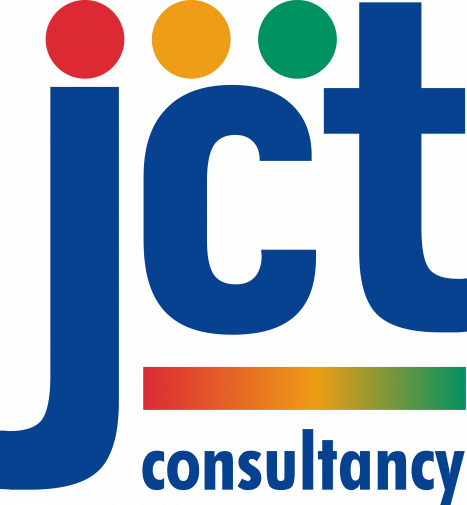Papers at the JCT Symposium are delivered by practicing engineers, innovators, academics and industry experts. We pack in around 20 to 25 papers over two days in a single theatre keeping the audience engaged and informed.
WE ARE NOW CALLING FOR PAPERS FOR 2024
If you are interested in submitting a Paper and presenting it for 2024 all we initially ask for is a working title and a one or two paragraph short synopsis. You can make a proposal by using our contact form.

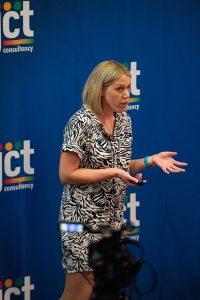
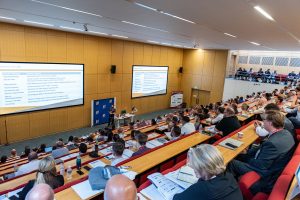

If you are attending the Symposium and have requested electronic copies of the papers rather than a printed copy you can download the e Papers below.
You will require a password to view the PDF and this will be sent to you in advance of the event by JCT.
Confirmed Papers for 2024
To submit a Paper Proposal for inclusion on the Reserve List please either e mail JCT at symposium@jctconsultancy.co.uk or complete the Present Paper Contact form on the Present a Paper page on this website. We simply require a Working Title and a one or two paragraph synopsis to get the ball rolling.
Drones offer local authorities the opportunity to collect data on the condition and effectiveness of traffic signal infrastructure with increased safety, lower cost and with a lower carbon footprint. However, there are regulatory implications for the authority in deploying drones in-house or through a contractor. This paper from the Drone Ready Cities project will help you decide whether a drone solution is right for you and how to prepare for it.
Over the past few years, we have seen increasing use of Artificial Intelligence (AI) in equipment and systems used for traffic management. However, at this point, their application is rather sporadic and lacks a cohesive approach to their use to achieve a strategic implementation. Most vendors are using AI for specific applications and to provide additional capabilities to their products.
In Spring 2023, the “Superloop” was announced. The Superloop will provide a network of limited-stop express bus routes, circling the capital, enabling quicker connections to key outer London town centres, hospitals, railway stations, and transport hubs. As part of the launch, Network Performance Delivery (NPD) were a key partner in delivery. The entire Superloop network was subject to the RARR process (presented at JCT in September 2023) and bus priority at many locations reviewed. This presentation will detail the innovative approach NPD took to providing targeted Bus Priority for Superloop Routes to ensure express journey times were felt by passengers.
On-line consumer services from Deliveroo, alternatives to Taxis from Uber, optimised route navigation by Waze, hoards of Amazon deliveries, all of these have altered the numbers and types of traffic on our road network and affected our ability to move people and goods around.
How did we get here, how big is the problem and what if anything can we do about it?
We will describe a solution that has been used on-street to reinstate detection quickly and reliably with minimal TM and low risk to the installers.
Following from previous presentations and discussions at the symposium and based on experience gained across numerous recent cycle signal designs, from simple crossings to multiple major Cyclops arrangements, the paper and presentation will highlight some unusual layouts, innovative approaches to improving cycle facilities, and discuss the oddities, omissions and ambiguities in design requirements from LTN 1-20 and TSM Chapter 6. Proposing a ‘4way forward’ to accompany the national guidance, that looks to resolve the inconsistencies and design challenges in following the differing design guidance.
All-red pedestrian stages are usually modelled based on an assumption – such as appearing every cycle or every other cycle. A more sophisticated approach is required to provide more accurate modelling. This paper will outline how an assumed uniform pedestrian distribution can be used to predict the appearance frequency of demand dependent pedestrian stages, using pedestrian count data. It will outline how this approach can be combined with the use of bonus greens in LinSig to model demand dependent pedestrian stages. This methodology allows for a more refined approach when compared with traditional modelling assumptions. This paper will also include evidence showing the difference between predicted and observed frequencies. Various sites across Greater Manchester have been part of this study and the data from these sites will be used to support the above. The outcome will be an approach to modelling that can be applied by all users of LinSig.
One of the fruits of the Dutch Talking Traffic program is the realisation of a standard for exchanging C-ITS messages with Traffic Light Controllers (TLCs). The standard was developed in a workgroup including the leading European Union TLC vendors Dynniq, Swarco, and Yunex and has been implemented on a large scale in The Netherlands. This standard has been created to facilitate the large-scale rollout of TLC use cases based on long-range communication. It is now also adopted by the region of Flanders (Belgium) in their large-scale C-ITS deployment initiative Mobilidata as well as studied in the NordicWay 3 program. In the meantime, the Netherlands is looking at expanding the scope of the interface to other types of road equipment, such as RoadSide Units (RSUs), electronic signs, access barriers, sensors, etc. This standard facilitates the large-scale deployment of many day 1 and day 1.5 C-ITS use cases, such as Green Light Optimal Speed Advisory (GLOSA), Time to Green(TTG), and Traffic Signal Priority (TSP).
Alex will discuss the design and explain how they plan to have adaptive signals at both cities to manage the bus corridors but also provide emergency vehicle priority.
SWARCO have worked with a number of customers to support and deliver a program to take them from a standard parking guidance system into a fully integrated UTMC compatible system by providing a phased migration approach to allow customers to get a feel for the system.
SWARCO have supported this phased approach by providing the customers with a 2-6 week pilot of the MyCity Urban Mobility Platform, to give the customers exposure to the system and provide user functionality updates and suggestions to support their use of the systems.
After the pilot, SWARCO have supported the migration from legacy parking guidance systems into the UTMC capability system, which enables the customers to expand their ITS capability, and connect other data sources such as air quality monitoring devices, journey time devices, floating car data, weather station devices, traffic light controllers with remote monitoring and much more.
SWARCO are working with customers to understand what ITS equipment they already have out on the street or data already coming into the council, which can then be used to help move traffic around the area or provide information to the travelling public. SWARCO interfaces are agnostic into the MyCity Urban Mobility Platform, and would like to continue to work with the customers to enable them to use existing equipment into the system to give a complete ITS solution.
The session will show the range of malicious threats facing sites and sectors and the vulnerabilities that can be mitigated by forethought and the design and specification of proportionate countermeasures. It will also show the security-mindedness required of professionals.
Darren Capes will share the latest updates on the additional funding secured for improving Traffic Signals.
Almost every vehicle carries a mobile phone, (not forgetting eCall) the whereabouts of which is known to the service provider. We can buy in that data to learn about traffic movements anywhere. No need for loops, CCTV, or manual counting.
At busy times there is a theoretical and demonstrable mathematical relation between speed and flow rate, which allows the construction of a Fourier representation of that flow into the future, enhanced by AI. More usefully it allows calculation of road capacity today, how near to maximum it is, and what it is likely to tomorrow.
A case study of M6 Jcn 19 shows how the technique is used to safely and easily validate junction design, but it also shows the power of the technique in making future predictions, and, when combined with weather forecasts, monitoring when fog actually exists on the road.
In summary, a powerful and easy way of understanding traffic patterns, and hence how to strategically plan to reduce and avoid congestion.
In 2025 the Design Manual for Roads and Bridges (DMRB) and Manual of Contract Documents for Highway Works (MCHW) are due a re-write. This paper sets out the background as to what will come in the light of new technologies such as autonomous vehicles, and increasing the safety and resilience of what exists already.
Why do drivers persistently use wrong lanes or run red lights when we have provided clear information? When we create designs, can we get the driver behaviour we want just by telling them what to do? Or is perception more important than information?
This paper looks into how junction design influences driver perception, and how that changes behaviour. Written applying decades of experience and also a fresh pair of eyes, we explore how we might get drivers to react the way we want, just through our design choices.
In 2014, Tony Earl concluded a very successful Network Management career in London having led the operations for The City Ring of Steel, Congestion charging, and the 2012 Olympic Games, also playing a leading role in many of the then Mayor’s Smoothing Traffic flow agenda, leaving significant organisational legacy.
Tony was then persuaded to depart the UK to lead the Government response to rising congestion in Western Australia.
Hear about the transformation work that Tony undertook which transformed Main Roads Western Australia into a World Class Network Operator.
In a SCOOT network with short link lengths, such as a gyratory, queues can form which threaten to lock up the network. These may occur due to downstream congestion. One way to prevent this is to hold traffic back with gating or signal plans, but this can delay more traffic than necessary. There is also a facility within SCOOT to change parameters and plans using the ASCC command, but this can react rather late in some circumstances. This paper describes the use of the GO bit within a SCOOT plan along with changes to the controller stage change conditioning, to effect a hurry call triggered by loop call/cancel detector inputs.
What happens when you have an ongoing research and development program which makes better use of data and how this translates into better outcomes for local authorities and road users.
Cheshire East Council engaged SWARCO to deploy its latest adaptive traffic optimiser, ImFlow, at several problematic junctions. These junctions were previously under Fixed Time, Vehicle Actuated or MOVA control. Has ImFlow made things better?
An Artificial Intelligence heuristic, born out of space exploration techniques, has been applied to address and improve complex traffic congestion in Hull City. The system utilises existing traffic data to create dynamic models of the traffic, allowing a spectrum of approaches to be applied through traffic signal timing adjustments. We will look at the nature of the challenge, the project objectives, the AI application, and the results achieved.
Shuttle systems using traffic signals to control traffic over a one-way section of road are traditionally operated in isolation. In this presentation Craig Cameron from Yunex Traffic's Consultancy Services team considers the challenges and benefits of coordinating and controlling multiple 'shuttle' type schemes and shares his thoughts and learnings from recent shuttle deployments.
2023 Session Chairs
The Symposium Learned Programme is split into seven sessions delivered contiguously over two days. Sessions are Chaired (moderated) by leading industry professionals and academics.
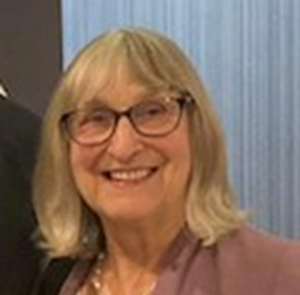
Professor Margaret C. Bell, CBE
Science City Professor of Transport and Environment 2006: Honoured Commander of the British Empire for services to Sustainable Transport, Queen’s 80th Birthday. 2019: Rees-Hills ITSUK Lifetime Achievement Award. Honorary Fellow of IHE and ICE, FIHT and CMILT and Honorary Editor Chief of the IET ITS. Founder, in 2000, and Chair of the ITSUK Smart Environment Forum until 2021. Currently the Independent Chairperson of the Bus Service Improvement Plan Enhanced Partnership Board in Derbyshire. Current research is establishing performance measures for Green Light Optimal Speed Advisory system integrated with SCOOT; evaluating roadside pollution (air and noise) in the vicinity of motorways operating Automatic Traffic Management and understanding travel behaviour of the Tyne and Wear Metro users. As co-investigator of the EU Interreg funded project eHUBS understanding the demographics of potential users of shared e-mobility (electric cars, e-bikes, e-scooters, e-Cargo bikes) in Europe including Manchester, Inverness, Dublin and Wallonia, estimating the impact of e-mobility on carbon and air pollution emissions.

Darren Capes FIHE FIET
ITS Policy Lead, Department for Transport Manager, Transport Technology Forum Vice President, Institute of Highway Engineers “Darren Capes has over 30 years’ experience working in local and central Government He is a Fellow of the IET and IHE, who has worked in most areas of municipal engineering with particular emphasis on design, construction and evaluation, transport planning, and technology development and implementation. Darren has a particular interest in emerging transport technologies and is Vice President of the Institute of Highway Engineers (IHE) and Chair of the Transport Policy Panel of the Institution of Engineering and technology (IET). He manages the Transport Technology Forum for the DfT and speaks regularly on the challenges of emerging transport technology in the UK and internationally”.

Mike Guerin
Head of Business Development for SWARCO UK & Ireland. In his role, Mike leads the Sales, Marketing and Bid function for SWARCO’s Traffic products. These include Urban Signs, Inter Urban Infrastructure (Signs & Signals) and software solutions (UTC, UTMC, MyCity). He has 4 years’ experience in the ITS sector, including 3 years at TRL Software, leading the Sales & Marketing function. Mike has extensive experience in leading Sales & Marketing teams in software and other industries, having worked for FTSE100, S&P500, SME’s and Scale Up companies. Mike has a degree & Masters from Lancaster University Management School, is a Fellow of the Institute of Professional Sales & is a big sports fan (speak to him about 90’s Premier League football, the pain of supporting Middlesbrough or his love of American Sports, particularly Chicago’s Teams). He lives in Ascot with his wife and 2 young children.
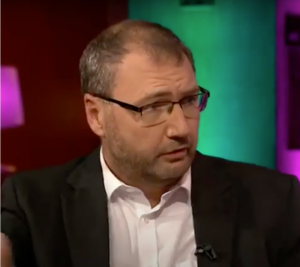
Paul Hutton
Transport Consultant and co-owner of Highways-News.com. "Paul Hutton is one of the world’s leading journalists specialising in transport technology. A trained broadcast journalist who worked as a presenter, newsreader and sports reporter on local and national radio and TV, Paul has been in the ITS sector for nearly 25 years having run the operations of two radio traffic news companies. Paul worked on the Travel Information Highway and delivered the Traffic Radio service for government as well as providing traffic reports for the vast majority of BBC and commercial radio stations across the UK and also working in Canada, Australia and the US. He co-owns the website Highways-News.com, provides PR and communications support for the Transport Technology Forum and a number of SMEs, and regularly hosts webinars and moderates panel debates at events."
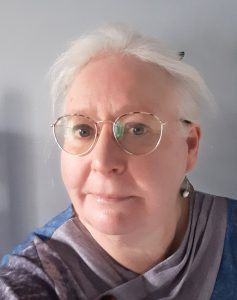
Jennie Martin MBE FCILT, Trustee, PACTS
Jennie Martin has spent her working life in transport – with the then British Rail, the Corporation of London, and ITS United Kingdom. She was Secretary General at ITS (UK) from 2004 to 2023. She is a past Chair of the Network of National ITS Associations, hosted by ERTICO. She is a Vice President of CILT International, Chair of Bus Users UK, a Trustee of PACTS, Member of the ITS Committee at BSI, and a working group Chair with PIARC. Jennie is originally from Sweden but a happily naturalised Londoner for many years.
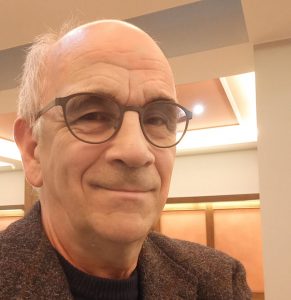
Dr Mark Pleydell
Director PLeydell Technology Consulting Ltd . PTC is a technology consultancy providing services to businesses and local authorities in the traffic control and ITS sectors. He is also, in an unpaid capacity, the director for TOPAS Ltd. He is a Chartered Physicist and joined the traffic industry in 1994. He has been representing the industry on standard and specifications setting bodies since the mid 90’s, representing ARTSM and working with the then Highways Agency and local authorities. He was long-time chair of what is now working group 4 and has sat on the Exec first in a co-opted role and subsequently as member of the Executive, becoming Vice Chair in March 23. Over the course of his career he has written numerous articles, presented at various events both in the UK and internationally. What gets him up in the morning is the sense of achievement that comes from solving problems for clients and helping to unite the sector and assist it in delivering well-defined pragmatic and innovative solutions to meet the ever-changing transport needs of our community. In his time away from the desk he has recently started bee-keeping and is looking forward to his first crop of honey.
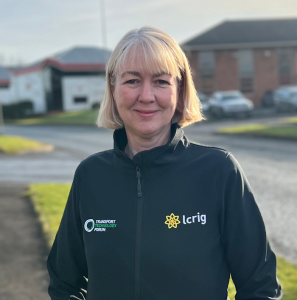
Paula Claytonsmith
Director, Government, and Strategy at Local Council Roads Innovation Group (LCRIG) Paula is LCRIG’s Director, Government and Strategy and formerly Executive Board Director at Gaist, the multi-award-winning international highways and mobile mapping company working with the Government, local authorities, private sector, and international organisations. Paula has worked in local government leading frontline services, a national public sector improvement agency tasked with performance improvement, KPMG Government Advisory, international consulting assignments, political lobbying sector, and independent national government advisory roles. Paula has also worked in executive leadership roles in the charitable sector including a major stem cell cancer charity leading their operations department and a strategic policy and lobbying role in a leading environmental charity focused on behaviour change to improve local environmental quality. Latterly she has been involved with PIARC, World Roads Association technical committee on accessibility and mobility in rural areas. Paula’s passion for technology, data, and public services means that she has spoken on more than one occasion on BBC Radio4’s programme “In Business” about technology and Infrastructure. Paula has authored articles about infrastructure, data, and its social impact for the Institute of Highway Engineers. In 2019, Paula gave evidence directly to the Transport Select Committee on Local Roads Funding and Governance. Paula is also a member of the Royal Meteorology Society, with a strong personal interest in extreme weather, climate change, and other weather phenomena.
